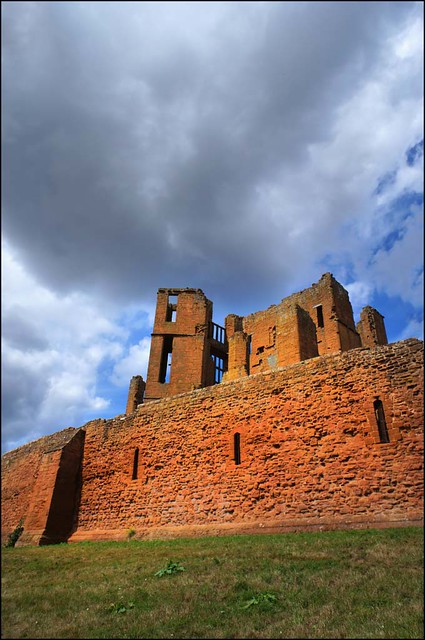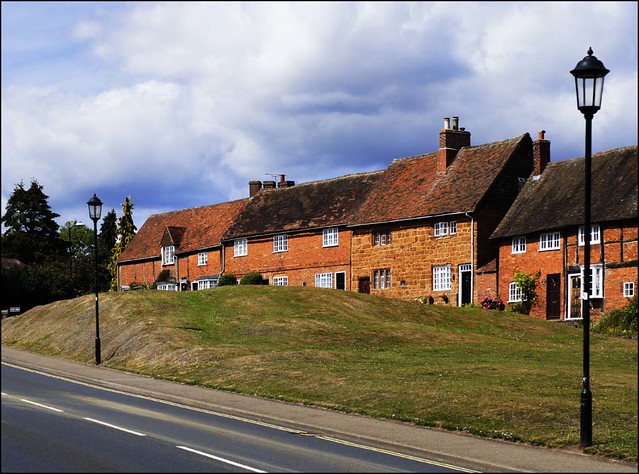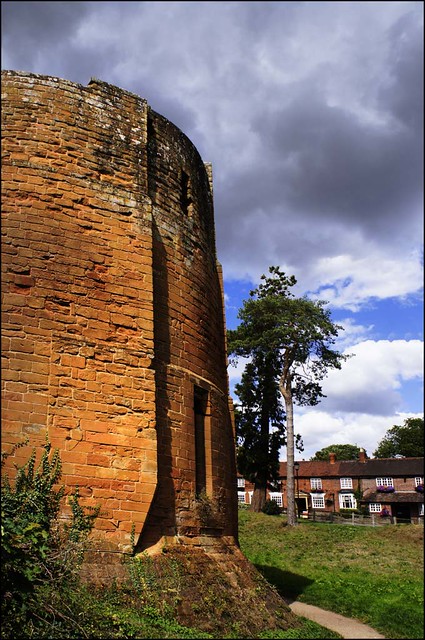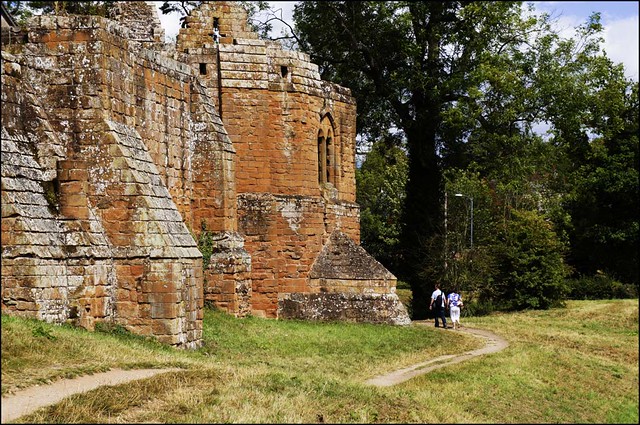Sony NEX-C3 16mm f/2.8
Finally the sun came out and I was able to try the NEX-C3 and the two lenses in a "real-world" situation.
Sony NEX-C3 18-55mm
HOW IT WORKED FOR ME
Its a very light outfit, easily the lightest and smallest I've used, even with the 18-55mm kit lens.
The OLED screen works well in bright sunlight, even with polarised sunglasses.
The 18-55mm seems to be a better quality lens than the 16mm. Even at f/8 the 16mm had soft edges. Both lenses suffer from quite a bit of barrel distortion.
The focus peaking function and manual focusing works very well, See shot below.
Sony NEX-C3 16mm f/2.8
Sweep Panorama is OK. Though you have to be sure you get more than you need in the frame, since the in-camera software does some severe cropping as you can see below.
Sony NEX-C3 18-55mm
Shooting a panorama with multi-images and stitching together in Photoshop produced a much better result.
Sony NEX-C3 16mm f/2.8
Using the camera is pretty quick, though changing settings via the menus does slow everything down. It works fine if you keep the same settings throughout and the AF is pretty quick. Its just difficult if you want to make some adjustments to what you do. Setting it up with some presets and a greater familiarity with the camera would help that obviously. I must say that I didn't find the menus particularly intuitive though. It is however a lot easier to get around then the NEX-5 I had was.
IMAGE QUALITY
As I found from the tests I did, the final file reminds me very much of the results I've been getting with my Nikons. The Sony software gives me a decent raw conversion to work with in Photoshop and the results are sharp and have good colour.
Sony NEX-C3 18-55mm
Sony NEX-C3 18-55mm
Anyone coming to this camera from a micro-sensor point and shoot is going to experience a quantum leap in quality. Even at its basic default settings, the NEX-C3 produces decent files, and the jpgs, though a little soft, are OK. Better than most.
I would also imagine a long-term DSLR user would also be pleasantly surprised by the results. This Sony sensor, in all its various incarnations, is a good one, and I can see its attractions for someone wanting a much smaller and lighter camera. It doesn't have DSLR functionality and by the nature of its design and layout it isn't really a DSLR "alternative" in the way something like a Panasonic GH2 can be viewed.
Sony seem to gone very much for the "super compact" idea, and have provided a quality package for those who are used to that kind of shooting. It also works very well as a camera for those of us who want to take high quality images without appearing to do so. There are many situations where using a large DSLR would be "frowned upon" and questions might be posed as to what the photographer was doing. I doubt that anyone would think twice about someone using using the NEX-C3. Unless people are aware of it, it does give the impression of being a "non-serious" and therefore "non-threatening" camera.
With its low-light performance I can see it as a very useful camera for when a photographer needs to be unobtrusive, though the shutter is a bit noisy.
WHERE IT DOESN'T WORK FOR ME
Using a live screen only, and no viewfinder (either optical or EVF) is a handicap, as far as I'm concerned. Since the majority of my work is outdoors in sunlight I need something better than any live view screen can provide. Though the NEX-C3 screen is better than most, I'm much happier with a good viewfinder. It enables me to block out everything apart from what I'm photographing, gives more stability, doesn't suffer from sunlight problems, and feels much more comfortable.
Putting the majority of the functions into a menu slows down the camera for me. I change a lot from programme mode to aperture priority to shutter priority and change shutter speeds and apertures manually constantly. Having to do this within a menu system slows me down. On top of this the NEX-C3 menu system is not the most well thought out and I found it slow. I was getting pretty frustrated with it towards the end of the day.
To be honest the lenses are a little disappointing. They are far from bad lenses, but it does seem a lot of compromises have been made to keep them as small as possible. Though the Olympus 12mm f/2 m4/3 lens is an object lesson in how to achieve quality in a very small lens. Both the 18-55mm and the 16mm have quite a lot of distortion and the 16mm is somewhat soft away from the centre. Its going to be interesting to see if my M-mount or Nikon lenses perform any better when my adapters arrive.
Its not going to make me abandon m4/3 anytime soon. For example, when I look at images taken with my Olympus E-P3 and 12mm lens on my screen, I'm much more impressed than looking at these Sony images. I still love the look of m4/3, the colour and the sharpness. These NEX-C3 images, like those from my Nikons, need a lot of sharpening. Every camera (bar one) that I've ever used that has good high ISO performance tends to be somewhat disappointing at low ISO's. (The exception is the Fuji X100, which was seriously sharp at all ISO's) Since the vast majority of my work is using low ISO's then my opinion of any camera is biased because of that.
I haven't as yet done a head to head comparison with m4/3, but looking at the images I took yesterday I still prefer my Olympus and Panasonic created images to those from the NEX. To a large extent this is a personal thing, and I can fully understand that there will be others who take the opposing view. As ever this is a subjective rather than an objective review.
However, if Sony can get this level of image quality from a 24MP sensor, then that will something else. Some have questioned whether the next Sony APS-C will indeed be that size. Particularly since it will be the largest increase in MP's ever. It is the difference between a 46MB file to something just under 70MB. It is equal to the highest resolution currently only available on the full-frame Nikon D3X and Sony a900. All this in a small, light camera.
There is the question of course of e-mount lenses being capable of making the best of all those extra pixels. I'm also thinking about what strength anti-aliasing filter they will be using and what kind of in-camera software they will employ. 24MP on an APS-C sensor seems an awful lot, and though Sony have taken some time to get this ready, I think many of us are going to study the first samples that appear very closely.






